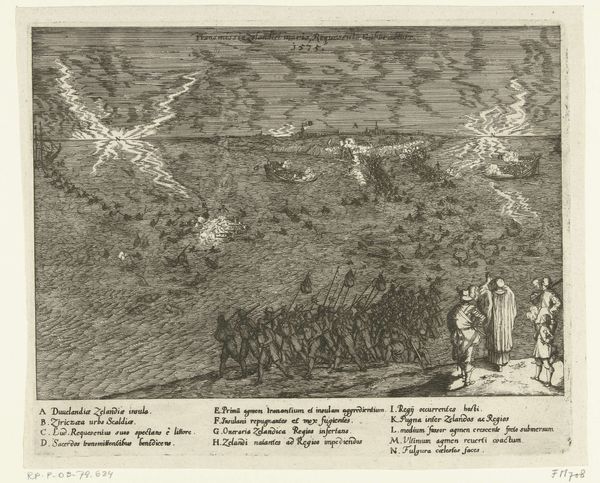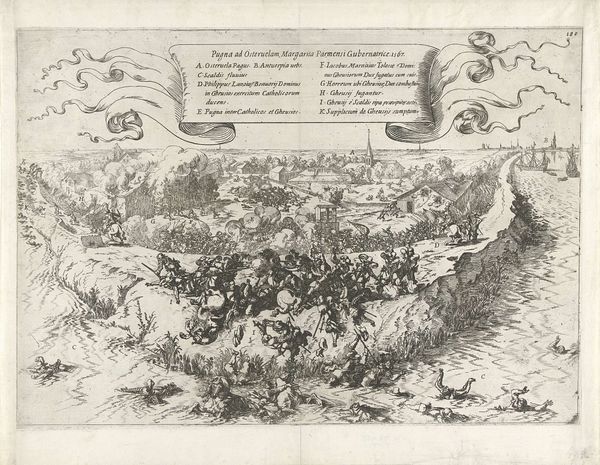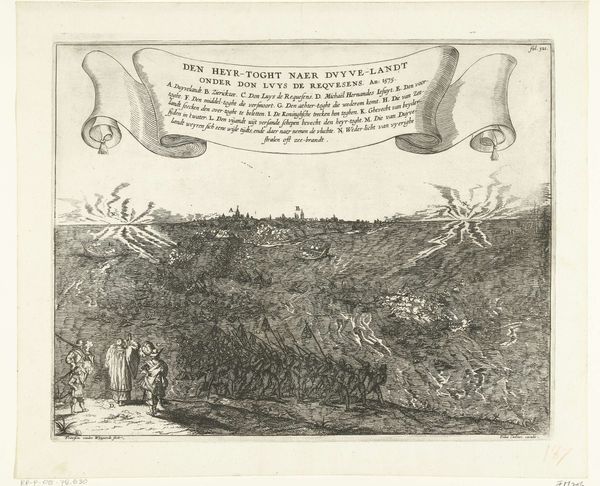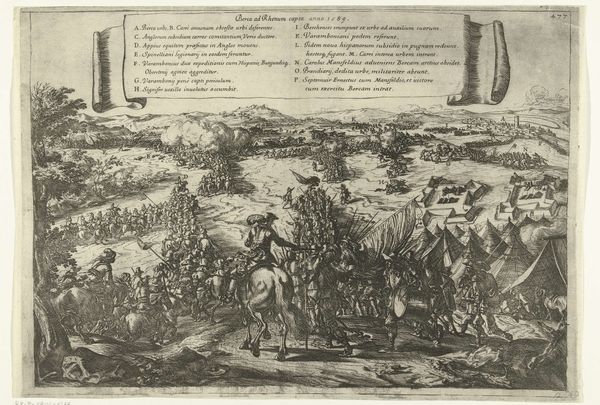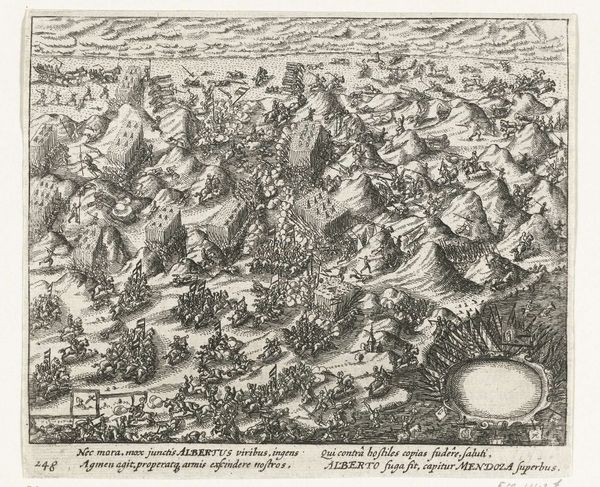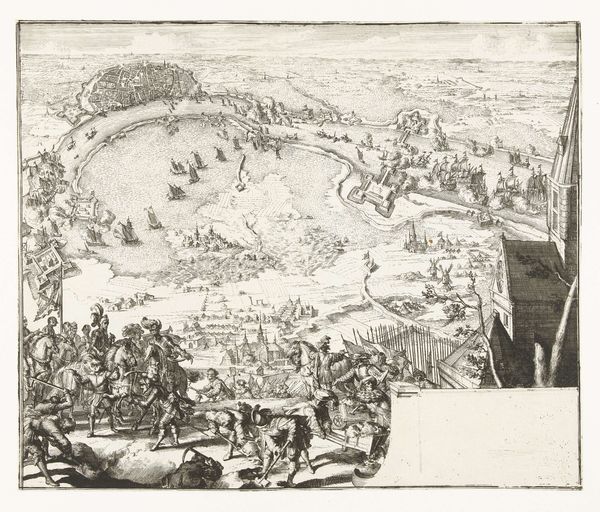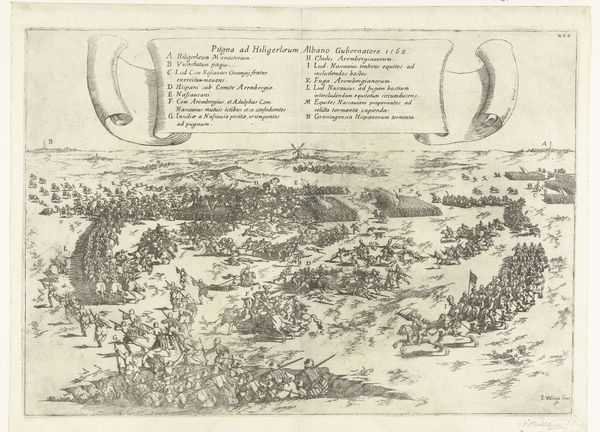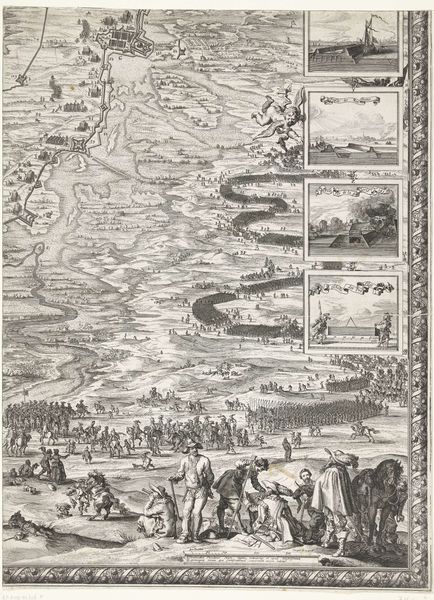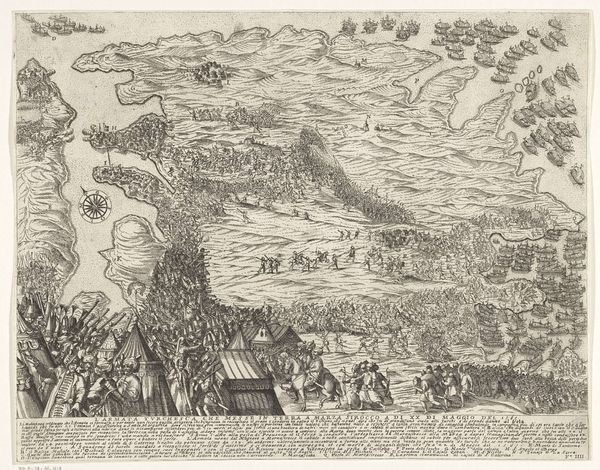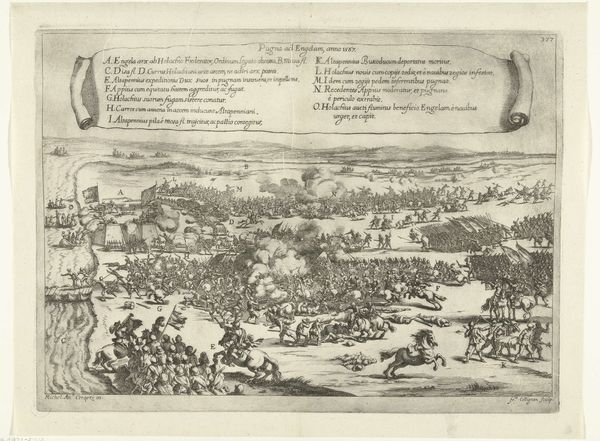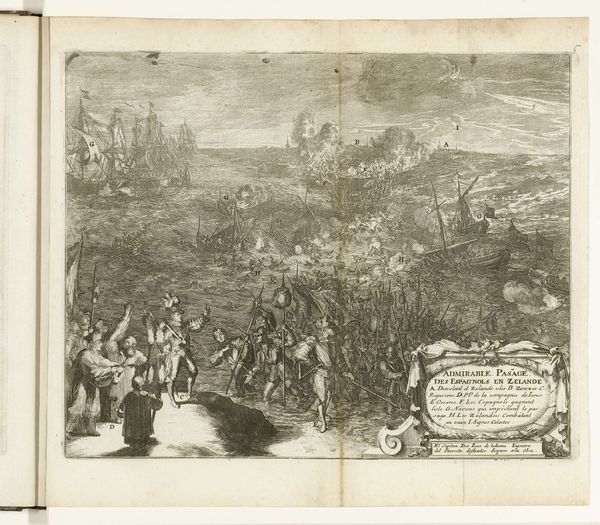
Nachtelijk tocht van Spaanse soldaten door het water naar Duiveland, 1575 1630 - 1632
0:00
0:00
print, etching, engraving
#
narrative-art
# print
#
etching
#
old engraving style
#
landscape
#
history-painting
#
engraving
#
realism
Dimensions: height 297 mm, width 424 mm
Copyright: Rijks Museum: Open Domain
Curator: This etching, crafted by Johann Wilhelm Baur between 1630 and 1632, captures the "Nachtelijk tocht van Spaanse soldaten door het water naar Duiveland, 1575"– A Night Crossing of Spanish Soldiers to Duiveland. Editor: My goodness, it's a chaotic beauty! Look at the stark contrast between light and shadow, the almost frantic energy conveyed through the lines. It's like a fever dream committed to paper. Curator: The stark contrasts you point out are typical for etchings from this period and certainly adds to the drama. Baur is reinterpreting events from half a century earlier when Spanish troops waded across the waters to attack the island of Duiveland. Note how the text embedded into the artwork itself helps to narrate events as well, a unique choice in visual storytelling that could easily fall flat, but here serves the history quite well. Editor: The soldiers trudging through the water really gives it a feeling of determination despite all odds. But tell me, is it just me, or do the figures almost appear like ants, unified in purpose but also somewhat anonymous? The figures on the right bank, watching, look on as their plan comes to life. Curator: That's a very astute observation. Considering the historical context – the Eighty Years' War, where the Dutch fought for independence from Spanish rule – that sense of unified, almost faceless purpose could symbolize the relentless, often dehumanizing, nature of war. And the figures to the right do add a compelling layer; perhaps they represent the high command orchestrating this daring, but ultimately ill-fated, maneuver. Editor: "Ill-fated?" Do you think that knowledge tinges the piece? Makes it less about valor and more about...futile sacrifice? Perhaps that accounts for the work’s melancholic undertone? Curator: Indeed. Historically, the crossing was a disaster, with many soldiers drowned or captured. Knowing that certainly adds a layer of somber reflection on the futility of conflict, I think, imbuing the print with pathos that transcends simple historical documentation. The waters themselves feel… sinister, don't they? Editor: Sinister! That’s exactly the word for it! Thank you for enlightening me, now, when I look at this piece, I can’t help but consider the broader ramifications and historical undercurrents within, especially how it reflects back at us. Curator: And I see now, too, the strange mix of realism and something almost surreal in Baur’s execution… A memory filtered through the fog of history, perhaps.
Comments
No comments
Be the first to comment and join the conversation on the ultimate creative platform.
